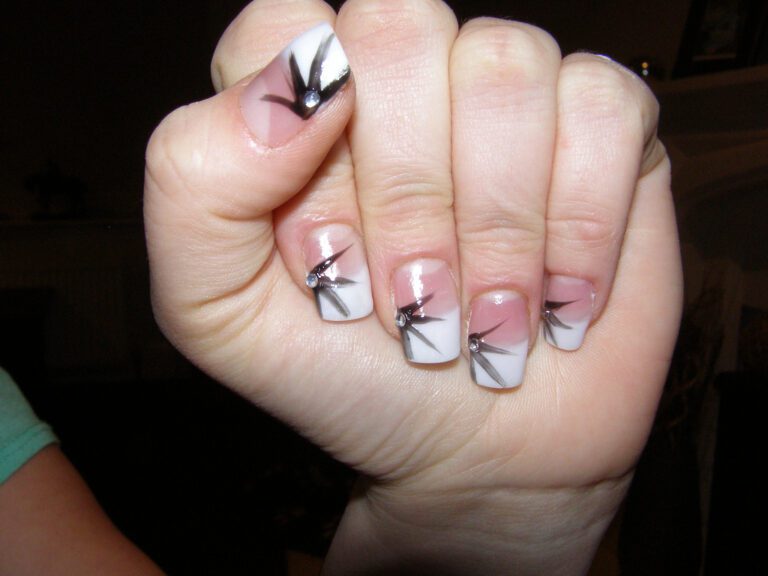“Framing Finesse: What Nails to Use for Framing”
In the construction industry, the choice of framing nails plays a crucial role in ensuring the structural integrity and longevity of a building. Understanding the different types of framing nails, their materials, coatings, and applications is essential for carpenters and builders. This article provides an in-depth exploration of framing nails, nail guns, specialized nails for specific applications, and best practices for efficient and durable framing.
Key Takeaways
- Choosing the right framing nails is critical for the structural integrity of a building.
- Nail guns offer efficiency and precision in framing, but safety considerations are paramount.
- Specialized nails, such as hurricane ties and stainless steel nails, cater to specific framing needs and environmental conditions.
- Adhering to nail placement and spacing guidelines is crucial for durable and long-lasting framed structures.
- Awareness of common mistakes in framing and methods to avoid them is essential for successful framing projects.
Understanding the Basics of Framing Nails

The Anatomy of a Framing Nail
When it comes to the anatomy of a framing nail, the most crucial components to consider are the shank, head, and point. The shank determines the nail’s holding power, while the head provides the necessary surface area for driving the nail. Additionally, the point of the nail plays a significant role in its penetration and splitting resistance. Understanding these key elements is essential for selecting the right framing nail for your project. Here’s a brief overview of the anatomy:
Types of Framing Nails: Materials and Coatings
Framing nails come in a variety of materials and coatings, each designed for specific conditions and applications. The most common material is steel, known for its strength and durability. However, the type of coating applied to the nail can significantly affect its performance and longevity.
Galvanized nails are coated with zinc to prevent corrosion, making them suitable for outdoor or moist environments. There are two main types of galvanized coatings: Electro-Galvanized (EG) and Hot-Dip Galvanized (HDG). EG nails have a thinner zinc layer, suitable for interior or light exterior use, while HDG nails have a thicker coating, ideal for more severe conditions.
For interior framing, bright uncoated nails are often used. These are less expensive but should not be used where moisture or corrosion is a concern. Stainless steel nails are the best choice for highly corrosive environments, such as coastal areas, but come at a higher cost.
Tip: Always choose the nail coating based on the environment where the framing will be exposed. Using the wrong type of nail can lead to premature rusting and weakening of the structure.
Choosing the Right Length and Diameter
Selecting the appropriate length and diameter of framing nails is crucial for the integrity of your construction. Nail size is typically denoted in ‘pennies,’ symbolized by the letter ‘d’. For example, a 16d nail is larger and longer than an 8d nail. The right size depends on the thickness of the materials being joined.
Common sizes for framing include 16d, 10d, 8d, and 6d nails. The diameter also plays a role in the nail’s holding power. Thicker nails provide a stronger hold but may require larger holes and additional finishing work.
Tip: When in doubt, opt for a nail that is three times longer than the thickness of the material being fastened.
Here is a quick reference for selecting nail sizes:
- 16d (3-1/2 inches): Best for structural framing.
- 10d (3 inches): Suitable for framing walls.
- 8d (2-1/2 inches): Commonly used for sheathing.
- 6d (2 inches): Ideal for attaching thinner materials.
Remember, the correct nail size ensures a secure and lasting construction, while the wrong size can lead to structural failures or material damage.
The Role of Nail Guns in Modern Framing

Pneumatic vs. Cordless Nailers: Pros and Cons
When it comes to modern framing, the choice between pneumatic and cordless nailers is crucial for both efficiency and convenience. Pneumatic nailers, powered by an air compressor, are known for their durability and consistent driving power. They are typically lighter than their cordless counterparts and can work for extended periods without the need for battery changes.
Cordless nailers, on the other hand, offer unparalleled portability and ease of use, as they eliminate the need for hoses and compressors. They are powered by rechargeable batteries, making them ideal for job sites without easy access to power. However, they may require frequent battery swaps or recharges, especially during heavy use.
Tip: Always have spare batteries charged for cordless nailers to minimize downtime during critical framing projects.
The decision between the two types often comes down to the specific needs of the project and the preference of the user. Here’s a quick comparison:
- Pneumatic Nailers
- Pros: More powerful, lighter, no need for battery.
- Cons: Requires air compressor, less mobile.
- Cordless Nailers
- Pros: Highly mobile, no compressor needed.
- Cons: Heavier, battery-dependent.
Nail Gun Compatibility with Framing Nails
When considering nail gun compatibility with framing nails, it’s crucial to ensure that the nail gun is designed to accommodate the specific type and size of nails required for the framing project. Compatibility issues can lead to jamming, misfires, or damage to the nail gun. Always refer to the manufacturer’s guidelines for the recommended nail specifications and ensure that the nail gun is compatible with the intended nails before use. Double-checking compatibility can save time and prevent costly errors during the framing process. It’s a simple step that can make a significant difference in the efficiency and quality of the framing work.
Safety Considerations When Using Nail Guns
When using nail guns, it is crucial to prioritize safety at all times. Always wear appropriate safety gear, including safety glasses and ear protection, to protect yourself from potential hazards. Additionally, maintain a safe distance from others while operating the nail gun to avoid any accidents. It is also important to follow the manufacturer’s guidelines for the safe use of nail guns to prevent incidents and ensure a secure working environment. Implementing these safety measures can significantly reduce the risk of accidents and injuries when using nail guns.
Specialized Nails for Specific Framing Applications

Hurricane Ties and Structural Connectors
When it comes to hurricane ties and structural connectors, durability is key. These specialized nails are designed to withstand extreme forces and provide maximum structural support. Here’s a quick overview of the recommended nail types for these applications:
| Nail Type | Recommended Use |
|---|---|
| Hurricane Nails | Securing hurricane ties |
| Structural Nails | Connecting load-bearing members |
It’s essential to ensure that the nails used for these applications meet the required specifications and standards. Proper installation and selection of these specialized nails are crucial for the safety and stability of framed structures.
Tip: Always follow the manufacturer’s guidelines for installation and use of specialized nails in framing applications.
Ring Shank Nails for Enhanced Grip
Ring shank nails are a pivotal component in framing applications that demand a heightened level of grip strength. These nails are designed with a series of rings or grooves along the shank, which when driven into wood, create a more secure connection resistant to withdrawal forces.
The enhanced grip of ring shank nails makes them ideal for areas subject to heavy winds or seismic activity. They are often used in sheathing, siding, and decking where their ability to resist pull-out is crucial for structural integrity.
- When selecting ring shank nails, consider the following:
- The material of the nail should be compatible with the wood and the environment.
- The length of the nail must be appropriate for the thickness of the materials being fastened.
- Verify the nail’s compatibility with your nail gun to ensure efficient application.
Tip: Always check local building codes to ensure that your use of ring shank nails meets the required standards for your specific framing project.
Stainless Steel Nails for Corrosive Environments
When framing in areas prone to moisture and corrosion, the choice of nail material is crucial. Stainless steel nails are the go-to option for their resistance to rust and decay. Type 304 stainless steel is a common choice, offering good protection against general corrosion. However, for the most demanding environments, such as marine or salty conditions, type 316 stainless steel is recommended due to its enhanced resistance.
Stainless steel nails come in various sizes and types, including the popular 8d (2-1/2") ring shank nails, which provide a strong hold in structural applications. It’s important to match the nail size and type to the specific requirements of your framing project to ensure longevity and durability.
Tip: Always consider the environmental conditions your framed structure will face. Selecting the appropriate stainless steel grade can prevent costly repairs or replacements down the line.
For those using powder-actuated tools, specialized stainless steel nails like the X-CR P8 are designed for use on steel and concrete in corrosive environments. These nails ensure a secure and lasting connection, which is vital for the structural integrity of the frame.
Best Practices for Efficient and Durable Framing

Nail Placement and Spacing Guidelines
Proper nail placement and spacing are critical for creating a strong and stable frame. When nailing two pieces of lumber together, ensure that the nails are driven in at consistent intervals. This not only provides uniform strength across the joint but also minimizes the risk of wood splitting. For common framing practices, nails should be spaced 6 to 12 inches apart along the framing member.
- Start by marking the lumber at the required intervals to guide nail placement.
- Drive nails at a slight angle to increase holding power, a technique known as toenailing.
- For corners and intersections, use at least two nails to secure the connection.
Tip: Always verify local building codes for specific nail spacing requirements as they can vary depending on the structural application and geographic location.
Remember that the quality of nailing can be just as important as the quantity. Over-nailing can weaken the wood, while under-nailing can lead to a lack of structural integrity. Striking the right balance is key to efficient and durable framing.
Avoiding Common Mistakes in Framing
When it comes to avoiding common mistakes in framing, attention to detail is crucial. Ensuring proper alignment and support for the framing members can prevent structural issues down the line. Additionally, double-checking the fastening methods and using the appropriate nails for each application can significantly improve the overall quality of the framed structure. Remember, precision and care are key in achieving a durable and reliable framing outcome.
Ensuring Longevity of Framed Structures
The durability of a framed structure is not solely dependent on the quality of materials used; it also hinges on the meticulousness of the construction process. To ensure the longevity of your framing work, consider the following points:
- Use the correct nail size and type for the specific framing application. This will prevent structural weaknesses that can arise from using undersized or inappropriate nails.
- Apply the principles of good workmanship, which include straight nailing, avoiding splitting the wood, and ensuring that each nail is driven to the correct depth.
- Regularly inspect the frame for signs of stress or damage. Early detection of issues such as corrosion or wood rot can save significant repair costs down the line.
Tip: Always factor in the local climate and environmental conditions when selecting framing materials and during construction. This foresight can greatly extend the life of the structure.
Remember, a well-constructed frame is the backbone of any building. By adhering to these guidelines, you can contribute to a structure that stands the test of time.
When it comes to efficient and durable framing, it’s essential to follow best practices that ensure the longevity and strength of the structure. At NAILinspire.com, we believe in providing valuable insights and tips for framing projects that stand the test of time. Whether you’re a seasoned professional or a DIY enthusiast, our comprehensive library of nail art design resources is sure to inspire your next project. Visit NAILinspire.com today and discover the ultimate online destination for nail art design.
Frequently Asked Questions
What are the best nails to use for framing?
The best nails to use for framing are typically 3 1/2-inch long, 16-diameter, and have a ring shank for enhanced grip.
Can I use regular nails for framing?
It is not recommended to use regular nails for framing, as they may not provide the necessary strength and durability for structural framing applications.
What is the difference between pneumatic and cordless nailers?
Pneumatic nailers are powered by compressed air and are typically more powerful, while cordless nailers are battery-powered and offer greater portability and convenience.
How should I space the nails when framing?
Nails should be spaced according to building code requirements, typically 6 to 8 inches apart for vertical framing members and 12 to 16 inches apart for horizontal framing members.
Are stainless steel nails necessary for framing in non-corrosive environments?
While stainless steel nails are not necessary for non-corrosive environments, they offer added corrosion resistance and are recommended for outdoor or coastal framing applications.
What safety precautions should I take when using nail guns for framing?
Safety precautions when using nail guns for framing include wearing appropriate safety gear, keeping fingers clear of the nailer’s firing mechanism, and ensuring proper training and certification for operating nail guns.






